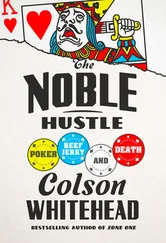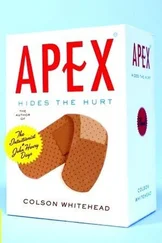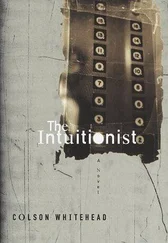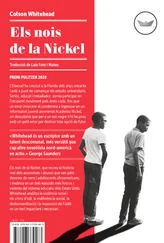“Why not?”
“Are you sure it’s not Bob’s Alive!?” Tiny hisses.
It is an old argument. Freddie “the Bull” McGinty, before his unfortunate heart attack, had identified three elemental varieties of puff pieces, and over time the freelancer community had accepted his Anatomy of Puff. An early junketeer, the Bull (so named for his huge and cavernous nostrils) observed the nature of the List over time and posited that while all puff is tied by a golden cord to a subject, be it animal, vegetable or mineral, the pop expression of that subject can be reduced to three discrete schools of puff. For the sake of clarity, the Bull christened the archetypal subject Bob, and named the three essential manifestations of Bob as follows: Bob’s Debut, Bob Returns, and Bob’s Comeback. Each manifestation commanded its own distinct stock phrases and hyperbolic rhetoric.
Bob’s Debut is obvious. Like lightning, Bob, the talented newcomer or long-struggling obscure artist, scorches the earth, his emergence charged by the profound electromagnetics of pre-Debut publicity and sometimes genuine merit. Such a glorious Debut deserves to be heralded in the glossy chambers of media. The out-of-nowhere record by the young lad from Leeds, the searching and surprisingly articulate second-person voice of the crab fisherman’s roman à clef, the visionary directorial outing channeling the zeitgeist— all these works can be attributed to Bob, and Bob’s Debut is a reliable story, the struggling talent is recognized, the indomitable vision championed. It makes good copy. This is the first manifestation of Bob.
Then comes Bob’s Return. His sophomore record, aimless electronic noodling in some cuts, fame has gone to his head, but still listenable; the second novel, recapitulating some of the first’s themes, somehow lacking, emboldened by success he tries to tackle too much; guaranteed by contract final-cut approval, the director esteems his instincts out of proportion, the special effects intrude and he can’t trim it down to under two and a half hours. Bob’s Return is well chronicled, he is a known quantity naturally pitched to editors, but not without hazards. He may have fallen out of favor among his initial champions and the long lead times of monthlies make cover stories a risky proposition. No editor wants to look at the cover of their magazine and see that they’ve showcased the profile of a celeb whose return had flopped miserably the week before. Editors guess, sniff the culture, and commit to Bob’s Return, fingers crossed that the opening weekend box office will not be cursed, that the goddamned critics have not panned Bob’s Return vehicle irredeemably to the mephitic baths of perdition. Weeklies and Sunday sections of major dailies have a leg up on the monthlies; if something magical happens, they can hitch a ride. This is the second manifestation of Bob.
Bob’s Comeback is miraculous. It can occur two years after the doomed or mediocre Return, or twenty years. Many things could have happened in the intervening time to make Bob’s Comeback printworthy: five crafty but overlooked novels consigned him to the twilight of midlist; three big-budget flops, two straight to video movies, one sitcom and a couple softcore thrillers fit only for the dingier cable outlets made a character actor of Bob; five very strange albums anointed Bob a critics’ darling but a radio pariah. The long unchecked skid into obscurity. But then the comeback. Something shifts in pop. It helps if they have overcome a drug problem. Test screenings positive, publishing industry buzz a-flowing, advance radio airplay of the first single augurs good things. The publicity blows fire out of the cave, scaring the townsfolk, scaly thighs scraping in preparation for a rampage through the village. All the bad things the critics said are forgotten, the industry insiders rally around Bob, the author of the where-are-they-now? article is tendered his kill fee. Bob’s Comeback makes covers. Equipped with a new look, a new agent, a new deal, Bob is back on top. Everybody loves an underdog, a redemption story. This is the third manifestation of Bob.
The Bull’s musings were well received by his freelancing brethren. It brought order to their lives. Spat upon by editors, insulted by neophyte publicity minions, the junketeers embraced the woeful clarity of the trinity. By the time J. made the List, another variety had been identified and sanctioned by the junketeers. The trend piece. The phenomenon of the trend piece was brought to the table by a British music writer named Nigel Buttons, who had journeyed into the lounges and clubs of London, cozied up to DJs and promoters of tiny establishments situated at the bottoms of stairwells accessible only by alley, the garrets of demimonde, and decided that the three traditional categories could be expanded to include a new one: Bob Is Hip. By the addition of Bob Is Hip, Bob’s other manifestations could be infused with new life by situating Bob in a scene or cultural eddy. Say Bob is a ukulele-playing gent who wears sunglasses on stage. If the evidence warrants, and even if it doesn’t, Bob the ukulele-playing sunglasses-wearing gent can be insinuated within a burgeoning scene of ukulele-playing sunglasses-wearers — they have a culture and slang, they all sleep together, the romantic entanglements internecine. It is an exotic subculture that begs further exploration. Bob, blessed by a multirecord or multibook or multipicture deal, spotted by well-paid talent scouts with special acumen, takes an early lead on his cohorts and is now the glorious exponent of an underground movement. Depending on the circumstances, his Hip Debut promises a spectacular earthshaking realignment of pop; he finds his true voice in his Hip Return; the maundering and general getting-his-shit-together years of his decline are justified by the Hipness of his Comeback. The Bob Is Hip variation met with some initial protest until its endorsers suggested that creating novel catch phrases from “the new” or “post-” or devising witty neologisms for the nascent movement could ensure one’s fame. A subculture is an amino acid soup out of which book deals crawl. More important, Bob Is Hip has broad applications. A manufacturer of blue jeans bruits its new tapered leg line. A junketeer attends and feasts at the event, but has no real peg to pitch the story. Armed with “The Neo Taper” and a broad manifesto, the blue jeans are a bona fide trend, no matter how short-lived, no matter how isolated. Presently, Bob Is Hip was a viable form of puff. Some junketeers jockeyed to grab credit for creating the quintessential Bob Is Hip piece, flailing their clippings in the air, neologisms underlined and backed up by concrete examples of their passage into conventional usage, but there were many contenders and the issue was never settled. Bob’s manifestations had become four.
Tiny started the argument in the Social Room because of a recent disturbance among the junketeers. Since the days of Gutenberg, an ambient hype wafted the world, throbbing and palpitating. From time to time, some of that material cooled, forming bodies of dense publicity. Recently this phenomenon occurred more frequently. Everyone felt this change, it was tactile and insistent. They found themselves in abstract rooms at events of no obvious purpose. Certainly there was a person/artifact/idea on display being promoted, but there was no peg, no impending release that it could be traced to. Without a peg, the subjects in question were hard to sell to the editors of newspapers and magazines. And yet the articles ran, the expenses were reimbursed, payroll cut the checks. The public liked them. Updates on well-known public entities who were doing nothing at all, a computer marvel far from implementation, musicians in coffee shops years from demos. The undiscovered hired flacks before they needed them; the established but quiescent or loafing celeb retained publicity apparatus to remind the people of their mere presence. Hence the new, hotly debated variety called Bob’s Alive! or Simply Bob. The golden cord had been severed and puff pieces roamed the newsstands, unmoored to any release date. Simply Bob. Gossip columnists had engaged in Simply Bob activities for years, some argued. A sighting at a club or restaurant, walking the shar-pei on Fifth Avenue, cruising a downtown haberdashery: these engagements were memorialized by bold type in the daily gossip columns. With junketeers munching and noshing at the tables of nonevent more frequently these days, and finding their reportage published, some sort of addition to the now-ossified varieties of Bob seemed imminent.
Читать дальше
Конец ознакомительного отрывка
Купить книгу












